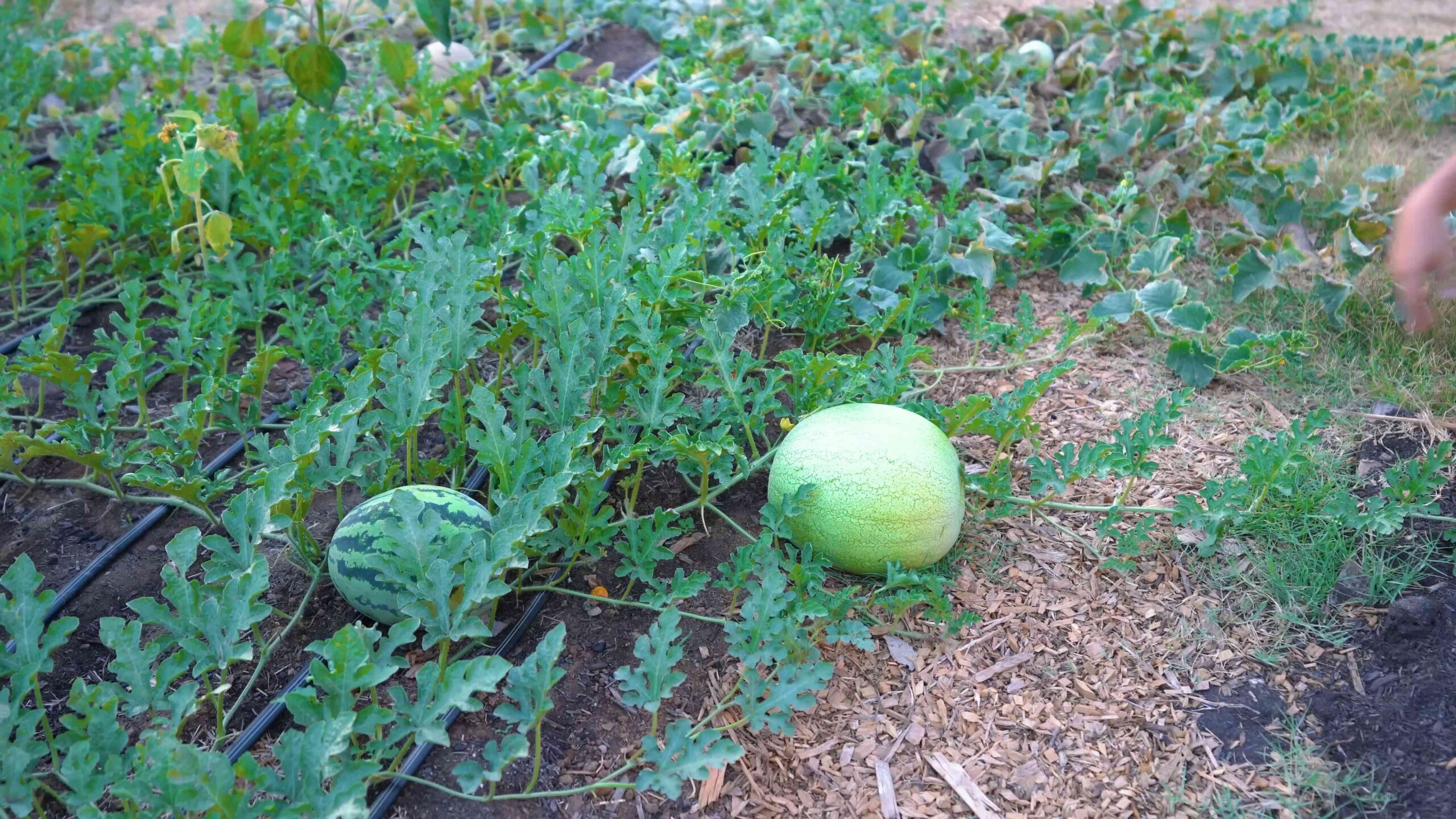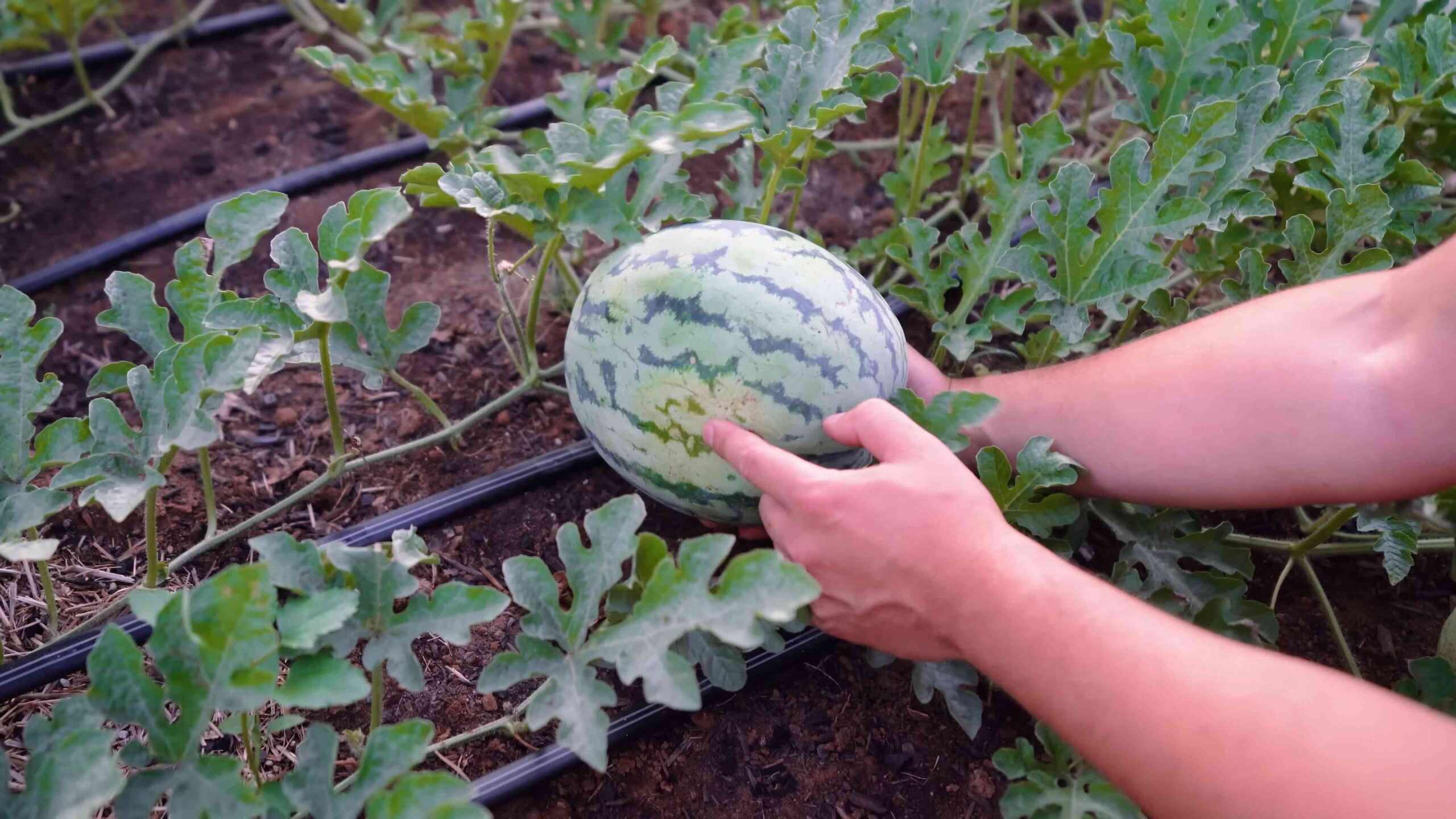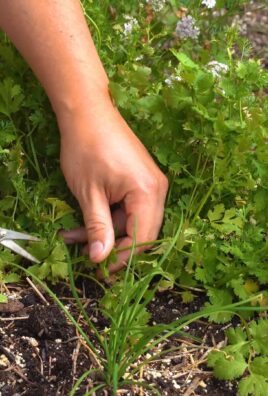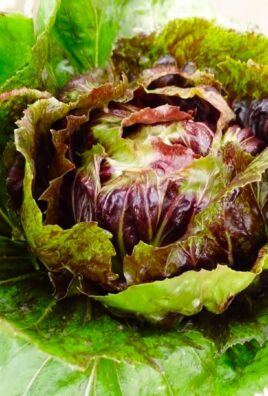Grow Watermelons Backyard – sounds like a dream, right? Imagine stepping into your own backyard and harvesting juicy, sweet watermelons that you nurtured from tiny seeds. It’s not just a dream; it’s an achievable reality with a little know-how and some DIY spirit! For centuries, watermelons have been a symbol of summer, abundance, and community gatherings. Originating in Africa, they’ve spread across the globe, becoming a beloved fruit in countless cultures.
But let’s be honest, the thought of growing these giants can be intimidating. That’s where this article comes in! I’m here to share some simple, effective DIY tricks and hacks that will empower you to grow watermelons backyard, even if you’re a beginner gardener. We’ll break down the process into manageable steps, from choosing the right variety for your climate to protecting your precious melons from pests.
Why do you need these DIY tricks? Because store-bought watermelons simply can’t compare to the taste of a homegrown one, bursting with flavor and sunshine. Plus, gardening is a fantastic way to connect with nature, reduce stress, and enjoy the satisfaction of creating something beautiful and delicious. So, grab your gardening gloves, and let’s get started on your watermelon-growing adventure!

Growing Watermelons in Your Backyard: A Comprehensive DIY Guide
Hey there, fellow gardening enthusiasts! Ever dreamt of biting into a juicy, homegrown watermelon on a hot summer day? Well, dream no more! Growing your own watermelons is totally achievable, even if you’re a beginner. I’m going to walk you through everything you need to know, from choosing the right variety to harvesting that sweet, refreshing fruit. Let’s get started!
Choosing the Right Watermelon Variety
First things first, you need to pick a watermelon variety that suits your climate and garden space. Some varieties are compact and perfect for smaller gardens, while others need plenty of room to sprawl.
* Consider your climate: Some watermelons need a longer growing season than others. If you live in a cooler climate, opt for a shorter-season variety like ‘Sugar Baby’ or ‘Bush Sugar Baby’. If you have a longer, warmer growing season, you can try larger varieties like ‘Charleston Gray’ or ‘Crimson Sweet’.
* Think about space: Watermelons are vines that can spread quite a bit. If you have limited space, choose a bush or compact variety. These varieties are bred to stay smaller and more manageable.
* Flavor preferences: Do you prefer a super sweet watermelon, or something with a bit more tang? Research different varieties to find one that matches your taste. ‘Black Diamond’ is known for its intense sweetness, while ‘Moon and Stars’ has a unique flavor and beautiful rind.
* Seedless vs. Seeded: Seedless watermelons are popular, but they can be a bit more challenging to grow. They require a pollinator variety nearby to produce fruit. Seeded watermelons are generally easier for beginners.
Preparing Your Garden Bed
Watermelons are heavy feeders, meaning they need a lot of nutrients to thrive. Preparing your garden bed properly is crucial for a successful harvest.
* Sunlight: Watermelons need at least 6-8 hours of direct sunlight per day. Choose a location in your garden that gets plenty of sun.
* Soil: Watermelons prefer well-drained, sandy loam soil with a pH between 6.0 and 6.8. If your soil is heavy clay, amend it with compost and other organic matter to improve drainage.
* Nutrients: Watermelons need plenty of nutrients, especially nitrogen, phosphorus, and potassium. Amend your soil with compost, aged manure, or a balanced fertilizer before planting.
* Space: Give your watermelon plants plenty of room to spread. Bush varieties need about 3-4 feet of space between plants, while larger varieties need 6-8 feet.
Planting Your Watermelon Seeds or Seedlings
You can start watermelon seeds indoors or direct sow them in your garden. Starting them indoors gives you a head start, especially in cooler climates.
Starting Seeds Indoors (Optional)
1. Timing: Start your seeds indoors about 4-6 weeks before the last expected frost.
2. Containers: Use peat pots or biodegradable containers to avoid disturbing the roots when transplanting.
3. Soil: Use a seed-starting mix that is light and well-draining.
4. Planting: Plant 2-3 seeds per pot, about 1 inch deep.
5. Watering: Keep the soil moist but not soggy.
6. Warmth: Watermelon seeds need warmth to germinate. Use a heat mat to keep the soil temperature between 80-90°F (27-32°C).
7. Light: Once the seeds germinate, provide plenty of light. Use grow lights or place the seedlings in a sunny window.
8. Hardening Off: Before transplanting the seedlings outdoors, harden them off by gradually exposing them to outdoor conditions for a week or two.
Direct Sowing Seeds Outdoors
1. Timing: Wait until the soil has warmed up to at least 70°F (21°C) before direct sowing seeds. This is usually a few weeks after the last expected frost.
2. Planting: Plant 4-5 seeds in a small hill, about 1 inch deep. Space the hills according to the variety’s spacing requirements.
3. Watering: Keep the soil moist until the seeds germinate.
4. Thinning: Once the seedlings emerge, thin them to the strongest plant in each hill.
Transplanting Seedlings
1. Timing: Transplant seedlings after the last expected frost, when the soil has warmed up to at least 70°F (21°C).
2. Preparation: Dig a hole that is slightly larger than the root ball of the seedling.
3. Planting: Gently remove the seedling from the container and place it in the hole. Backfill with soil and water thoroughly.
4. Spacing: Space the seedlings according to the variety’s spacing requirements.
Caring for Your Watermelon Plants
Once your watermelon plants are established, it’s important to provide them with the care they need to thrive.
* Watering: Watermelons need consistent moisture, especially during fruit development. Water deeply and regularly, especially during dry spells. Avoid overhead watering, which can promote fungal diseases. Drip irrigation is a great option.
* Fertilizing: Fertilize your watermelon plants every 2-3 weeks with a balanced fertilizer. You can also side-dress with compost or aged manure.
* Weeding: Keep the garden bed free of weeds, which can compete with the watermelon plants for nutrients and water.
* Mulching: Mulch around the plants with straw or other organic mulch to help retain moisture, suppress weeds, and regulate soil temperature.
* Pollination: Watermelons need to be pollinated to produce fruit. If you’re growing seedless watermelons, you’ll need to plant a pollinator variety nearby. Bees are the primary pollinators, so avoid using pesticides that can harm them. You can also hand-pollinate the flowers if necessary.
* Pruning: Pruning isn’t strictly necessary, but it can help improve air circulation and reduce the risk of fungal diseases. Remove any dead or diseased leaves and stems. You can also prune some of the lateral vines to encourage the plant to focus its energy on fruit production.
* Pest and Disease Control: Keep an eye out for pests and diseases. Common watermelon pests include aphids, squash bugs, and cucumber beetles. Common diseases include powdery mildew, anthracnose, and fusarium wilt. Use organic pest and disease control methods whenever possible.
Protecting Your Watermelons
As your watermelons grow, you may need to protect them from pests, diseases, and the elements.
* Pest Control: Use row covers to protect young plants from pests. Handpick pests off the plants whenever possible. Use organic insecticides like neem oil or insecticidal soap if necessary.
* Disease Control: Choose disease-resistant varieties. Provide good air circulation by spacing plants properly and pruning if necessary. Avoid overhead watering. Use organic fungicides like copper fungicide or sulfur if necessary.
* Sun Protection: In very hot climates, you may need to provide some shade for your watermelons to prevent them from getting sunburned. You can use shade cloth or other materials to create a temporary shade structure.
* Ground Protection: As the watermelons grow, they can become heavy and may rot if they are in direct contact with the soil. Place a piece of cardboard, straw, or wood under each watermelon to protect it from the soil.
Harvesting Your Watermelons
Harvesting your watermelons at the right time is crucial for getting the best flavor and texture.
* Days to Maturity: Check the seed packet or plant tag for the variety’s days to maturity. This will give you a general idea of when to expect your watermelons to be ripe.
* Tendril Test: Look for the tendril closest to the watermelon stem. When this tendril turns brown and dries out, the watermelon is usually ripe.
* Ground Spot: The ground spot, where the watermelon rests on the ground, should turn from white to yellow or cream-colored.
* Thump Test: Thump the watermelon with your knuckles. A ripe watermelon will sound hollow and deep. An unripe watermelon will sound dull and solid.
* Rind Appearance: The rind of a ripe watermelon will be dull and slightly waxy. An unripe watermelon will have a shiny rind.
* Stem: The stem of a ripe watermelon will be dry and brown near the point where it connects to the fruit.
* Harvesting: Use a sharp knife or pruning shears to cut the watermelon from the vine, leaving a few inches of stem attached.
Enjoying Your Homegrown Watermelons
Congratulations! You’ve successfully grown your own watermelons. Now it’s time to enjoy the fruits (or rather, the watermelons) of your labor.
*

Conclusion
So, there you have it! Growing watermelons in your backyard might seem daunting at first, but with a little planning, preparation, and these simple DIY tricks, you can be harvesting juicy, homegrown watermelons before you know it. We’ve covered everything from selecting the right variety for your climate to providing the optimal growing conditions and even hand-pollinating when necessary. Remember, the key to success lies in consistent care and attention.
Why is this DIY approach a must-try? Because nothing beats the taste of a watermelon you’ve nurtured from seed to fruit. The satisfaction of knowing you’ve created something delicious and healthy, right in your own backyard, is unparalleled. Plus, you’ll be avoiding the pesticides and long-distance transportation often associated with store-bought watermelons. You’ll be enjoying a truly fresh and flavorful treat.
But don’t stop there! Feel free to experiment with different watermelon varieties. Perhaps you’d like to try growing a smaller, personal-sized watermelon like a Sugar Baby, or maybe you’re feeling adventurous and want to tackle a giant heirloom variety. You can also explore different trellising methods to maximize space and improve air circulation. Consider companion planting with herbs like basil or marigolds to deter pests and attract pollinators.
Growing watermelons backyard is not just a gardening project; it’s an experience. It’s a chance to connect with nature, learn about the growing process, and enjoy the fruits (literally!) of your labor. It’s also a fantastic way to involve children in gardening and teach them about where their food comes from.
We’re confident that with these tips, you’ll be well on your way to enjoying a bountiful watermelon harvest. Don’t be afraid to get your hands dirty, embrace the challenges, and celebrate the successes.
Now, we want to hear from you! Have you tried growing watermelons in your backyard before? What challenges did you face, and what tips do you have to share? We encourage you to give these DIY tricks a try and let us know how it goes. Share your photos, stories, and any variations you’ve discovered in the comments below. Let’s build a community of backyard watermelon growers and learn from each other! Happy gardening!
Frequently Asked Questions (FAQ)
1. What is the best time to start growing watermelons?
The best time to start growing watermelons depends on your climate. Watermelons are warm-season crops and require a long growing season of at least 70-90 days. In general, you should start seeds indoors about 6-8 weeks before the last expected frost. If you live in a warmer climate with a longer growing season, you can direct sow seeds into the ground after the soil has warmed up to at least 70°F (21°C). Make sure to check your local frost dates to determine the optimal time for planting.
2. What kind of soil do watermelons need?
Watermelons thrive in well-drained, sandy loam soil that is rich in organic matter. The soil should have a pH between 6.0 and 6.8. Before planting, amend the soil with compost or well-rotted manure to improve drainage and fertility. Avoid heavy clay soils, as they can retain too much moisture and lead to root rot. If you have clay soil, consider growing watermelons in raised beds or containers.
3. How much sunlight do watermelons need?
Watermelons need at least 6-8 hours of direct sunlight per day to grow and produce fruit. Choose a planting location that receives full sun throughout the day. If you live in a particularly hot climate, some afternoon shade may be beneficial to prevent the plants from overheating.
4. How often should I water my watermelon plants?
Watermelon plants need consistent moisture, especially during fruit development. Water deeply and regularly, aiming for about 1-2 inches of water per week. Avoid overhead watering, as this can promote fungal diseases. Instead, water at the base of the plants using a soaker hose or drip irrigation system. Reduce watering as the fruits ripen to prevent them from splitting.
5. How do I know when my watermelons are ripe?
Determining when a watermelon is ripe can be tricky, but there are a few telltale signs to look for. First, check the tendril closest to the fruit stem. When this tendril turns brown and dries out, the watermelon is likely ripe. Second, look at the spot where the watermelon rests on the ground. This spot should turn from white to a creamy yellow color. Finally, give the watermelon a gentle thump. A ripe watermelon will sound hollow and deep.
6. What are some common pests and diseases that affect watermelons?
Watermelons can be susceptible to a variety of pests and diseases, including aphids, squash bugs, vine borers, powdery mildew, and fusarium wilt. To prevent pest and disease problems, practice good garden hygiene, such as removing weeds and debris, and rotate your crops each year. You can also use organic pest control methods, such as insecticidal soap or neem oil, to control aphids and squash bugs. For fungal diseases, ensure good air circulation and avoid overhead watering. If necessary, use a fungicide specifically labeled for use on watermelons.
7. Can I grow watermelons in containers?
Yes, you can grow watermelons in containers, but you’ll need to choose a large container (at least 20 gallons) and select a compact or bush variety of watermelon. Make sure the container has drainage holes and use a high-quality potting mix. Water container-grown watermelons more frequently than those grown in the ground, as the soil in containers tends to dry out faster. You may also need to provide support for the vines as they grow.
8. How do I hand-pollinate my watermelon flowers?
Watermelons have separate male and female flowers. If you’re not seeing fruit develop, it may be necessary to hand-pollinate the flowers. To do this, use a small paintbrush or cotton swab to collect pollen from the male flowers (which have a long, thin stem) and transfer it to the female flowers (which have a small, immature watermelon at the base). The best time to hand-pollinate is in the morning, when the flowers are open.
9. What are some good companion plants for watermelons?
Companion planting can help improve the growth and health of your watermelon plants. Some good companion plants for watermelons include:
* Marigolds: Deter nematodes and other pests.
* Basil: Repels aphids and other insects.
* Nasturtiums: Attract beneficial insects and deter squash bugs.
* Radishes: Help break up the soil and deter flea beetles.
* Beans: Fix nitrogen in the soil, which benefits watermelon growth.
10. How can I prevent my watermelons from cracking?
Watermelon cracking can occur when the fruits experience sudden changes in moisture levels. To prevent cracking, water consistently and avoid letting the soil dry out completely. You can also mulch around the plants to help retain moisture. As the fruits ripen, reduce watering slightly to prevent them from absorbing too much water and cracking.





Leave a Comment